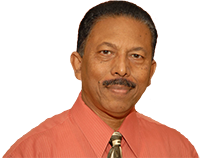
Bhubaneswar, July 28, 2015: Because of the dramatic events that unfolded there, certain places have come to symbolize entire movements or chapters of history. “Gettysburg,” for instance, immediately evokes the American Civil War, just as “Tiananmen Square” is now universal shorthand for non-violent protest.
In similar fashion, in terms of contemporary anti-Christian persecution, “Kandhamal” may be the single word that best captures the whole story.
Kandhamal is a district of the eastern Indian state of Odisha, formerly known as Orissa, where an orgy of violence descended upon the impoverished Christian minority in August, 2008. A series of riots led by radical Hindus left roughly 100 people dead, thousands injured, 300 churches and 6,000 homes destroyed, and 50,000 people displaced, many forced to hide in nearby forests where more died of hunger and snakebites.
The violence was carried out by mobs adorned with saffron headbands, a sign of right-wing Hindu militancy, and shouting slogans such as Jai shri ram! — victory to the Hindu god Ram — and Jai bajrang bali! — a tribute to another Hindu deity. Attackers wielded rods, tridents, swords, firearms, kerosene, and even acid.
The seven-year anniversary of the outbreak of the carnage falls next month.
To be sure, the 2008 pogrom was hardly an isolated incident. Violence against Christians in Kandhamal continues routinely today, although on a smaller scale.
Two days ago, there were unconfirmed reports that two Christians were shot to death by local police in a border area of the district, near a hilltop where they had gone to try to get a mobile phone signal to call their children, who had moved to a southern state in search of work.
The Rev. Ajaya Kumar Singh, a Catholic priest who heads the Odisha Forum for Social Action, said such violence is common in a place where the social elites are upper-caste Hindus and the Christians are largely lower-class “untouchables” and members of indigenous tribes.
“There’s a double hatred,” Singh said. “Because Christians are from the lowest caste, they’re untouchable, and because they’re Christians they’re seen as anti-national … they’re treated worse than dogs.”
Certainly that was the story of the 2008 riots that rocked the district.
It began with the Aug. 23, 2008, assassination of Swami Lakshmanananda Saraswati, a local Hindu leader who was regarded as a messiah figure by many lower-class Hindu tribal people. Although the full truth about his murder remains elusive, it was initially blamed on Christians, which seemed plausible given that he had explicitly vowed to eliminate the Christian presence in the area.
Archbishop John Barwa of Cuttack-Bhubaneswar, where Kandhamal is located, said that in some cases, tribals were convinced to assault Christians on the basis of myths deliberately circulated by radical Hindus to stoke anxiety.
In some cases, he said, locals were told that Christians would force them to eat beef, considered a grave sin in Hinduism, given the cow’s status as a sacred animal. Two brothers he met in a remote village, Barwa said, told him they took part in the violence because they’d been persuaded that if they didn’t kill Christians, they’d turn into bats.
Whatever its roots, what happened to Kandhamal’s Christians almost defies belief. Here are six of their stories.
Kanaka Rekha Nayak is a Dalit Christian who watched her husband Parikhit die at the hands of an angry mob shouting praise to Hindu gods. Both she and her husband were converts to Protestantism in a largely Hindu village.
Nayak’s fellow villagers, erstwhile friends and neighbors, burned his body with acid, sliced off his genitals, and then cut open his stomach and ripped out his intestines to wear them around their necks like a trophy.
There’s Rajesh Digal, a Pentecostal pastor who was asked to recant his faith. When he refused, he was beaten severely. He was then asked again if he would renounce his Christianity; when he said no, he was buried in a pit up to his neck for two days. When he asked for water, his tormentors urinated in his mouth.
Given a final chance to repudiate his faith, Digal declined for a third time. At that point, he was beaten to death with clubs, axes, and sticks. To this day, his body has never been found.
Or take the case of Sister Meena Lalita Barwa, a Catholic nun of the Servite order who was in Kandhamal when she and a local priest, the Rev. Thomas Chellen, were dragged into the streets by frenzied attackers shouting “Kill Christians!”
Sister Barwa, the niece of Archbishop Barwa, said her sari blouse was ripped off. She was raped by one of the men in the mob, and then paraded through the streets of the village semi-naked while the mob continued to howl.
At one stage, the attackers insisted that Chellen, the priest, also rape her. He refused and was severely beaten as a result. Both survived the ordeal, and Sister Barwa, now 37, is pursuing a law degree in order to fight for justice for other victims of similar violence.
The Rev. Edward Sequeira is a Catholic priest who had been working in the area for 10 years.
Around lunchtime on Aug. 25, 2008, an angry mob of roughly 500 people showed up at his residence, brandishing axes, shovels, spades, and iron rods. They demanded that he come outside, shouting slogans such as “Kill Jesus Christ!”
Sequeira, a member of the Society of the Divine Word religious order, was assaulted and then tossed back inside his house, which the mob set on fire. Sequeira hid in the bathroom, using toilet water to douse the flames. As he prayed for help, he could hear the screams of Rajni Majh, an orphan girl he had rescued, who was raped and then tied up and burned to death.
He was eventually rescued by police and airlifted to Mumbai for medical treatment. Today he still carries the pain of the ordeal, having gone through several surgeries to treat damage to his throat and lungs.
The Rev. Dushmonth Nayak is a priest from Kandhamal who was in Bhubenswar, the capital city of Odisha, at the time the violence erupted. At one point he received a phone call from his sister, who informed him that she was speaking to him with a knife to her throat.
Hindu assailants, she said, had burst into the home and demanded that she renounce her Christianity, and she had pleaded with them for permission to phone her brother to ask for advice.
“If you live, you will live with Christ,” Nayak recalls saying to her, “and if you die, you will die with Christ.”
Nayak’s sister managed to escape, and today she leads a women’s council in the area.
The Rev. Mrutyunjaya Digal was in Bhubenswar when he caught a glimpse of his brother, Pratap, on television from Kandhamal.
Pratap was one of eight Christian men in his village forced to undergo a Hindu “reconversion” ceremony, which involved having his head shaved, drinking water mixed with cow feces (a Hindu devotion expressing reverence for the cow), and reciting a prayer to the god Ram.
Police look the other way
Local police generally stood by during these rampages, rarely intervening until after the damage was done.
“The police were there when the attacks were happening, and they did nothing,” said Archbishop Raphael Cheenath, now retired, who was in charge of the Cuttack-Bhubaneswar archdiocese at the time.
“I have no doubt that were in alliance” with the Hindu radicals who instigated the attacks, Cheenath said.
After the fact, some 90 percent of cases filed against the perpetrators never result in convictions, in part because of a lack of police protection for witnesses and in part because of failures in recording the complaints accurately. As a result, most of those who carried out the violence are still walking around their villages as free men, with Christians who survived running into them on a routine basis.
“I feel sad that the legal system of my country has not been able to do its duty,” said Sister Barwa, whose rapist is still at large.
Why Christians?
Although simple hatred of Christians is the main force fueling the violence, it’s not the only one. Singh, the priest who directs a social forum in the area, ticked off at least six others:
Class prejudice: Christians in the area come from the lower castes, while the Hindus are upper caste.
Nationalism: Christians are often falsely seen as “Western”.
Economics: Many Hindus in the area are traders with an interest in maintaining a supply of cheap and exploitable labor, and resist Christian activists inspiring the lower classes to assert their rights.
Politics: Hindu-backed parties want to control the region and find that spreading propaganda against the Christian minority delivers votes.
Media coverage: Christians have little capacity to project their own voice.
Christian churches: They have largely “kept quiet,” according to Singh, and failed to take legal recourse in defense of Christian rights.
Although some observers say things have improved in the past seven years, many Christians are far from confident that all is well.
“There is silence, but no serenity,” said Suranjan Nayak, a local Christian activist.
“The extremists are still holding underground meetings, and they still mutter threats when they pass people in the streets,” he said. “There is no peace in the remote villages. We are not free, I never trust my neighbor like I did before. It’s always in my mind that he can do anything to me at any time.”
Christians also express frustration about the failure of the legal system to hold their attackers accountable. Of the 100 people murdered in August, 2008, there have been only 30 prosecutions and just two convictions.
Meanwhile, seven Christians widely believed by their co-religionists to be innocent languish in prison for the 2008 murder of the swami. Coincidentally, those Christians come from the same Kanhamal village as the two people reportedly shot to death July 26.
Cheenath said he believes Christian churches must be more outspoken in defending minority rights.
“When the RSS can tell 30 lies beautifully,” he said, referring to the Rashtriya Swayamsevak Sangh, the principal organization in India for Hindu radicals, “I don’t see why we can’t speak one truth strongly.”
For her part, Sister Barwa said she hopes the anniversary of Kandhamal’s tragedy next month will be a time for Indians to resolve that religious violence will never happen again.
“Every person in this country should respect the religion of others and the humanity of others,” she said. “Otherwise, what was my suffering, and the suffering of so many other people, really for?”
- cruxnow
Comments





